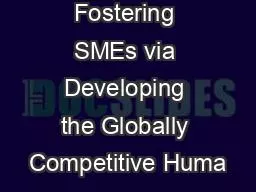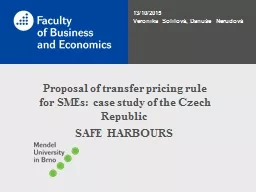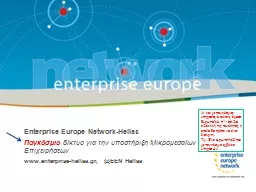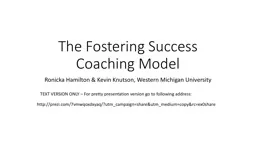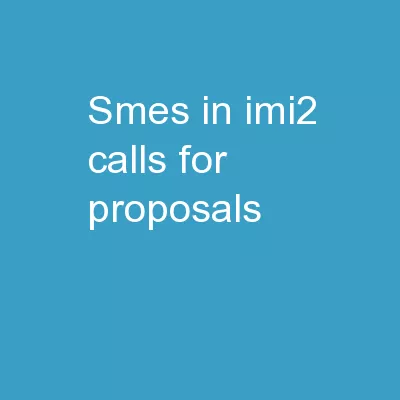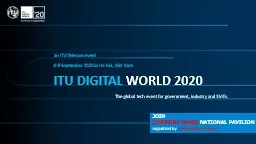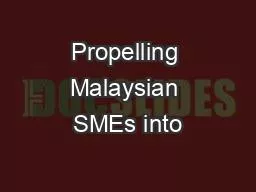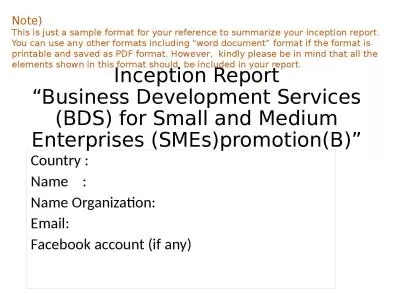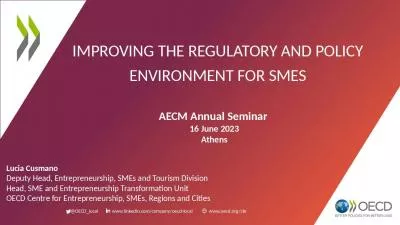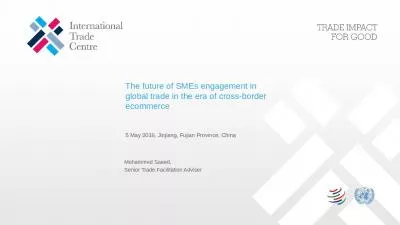PPT-Fostering SMEs via Developing the Globally Competitive Huma
Author : alida-meadow | Published Date : 2015-10-04
The Experience of Korea Ms Christy Lee President amp CEO Daewon Advisory Services Contents How Korea Made it Developing Globally Competitive Human Capital Fostering
Presentation Embed Code
Download Presentation
Download Presentation The PPT/PDF document "Fostering SMEs via Developing the Global..." is the property of its rightful owner. Permission is granted to download and print the materials on this website for personal, non-commercial use only, and to display it on your personal computer provided you do not modify the materials and that you retain all copyright notices contained in the materials. By downloading content from our website, you accept the terms of this agreement.
Fostering SMEs via Developing the Globally Competitive Huma: Transcript
Download Rules Of Document
"Fostering SMEs via Developing the Globally Competitive Huma"The content belongs to its owner. You may download and print it for personal use, without modification, and keep all copyright notices. By downloading, you agree to these terms.
Related Documents

